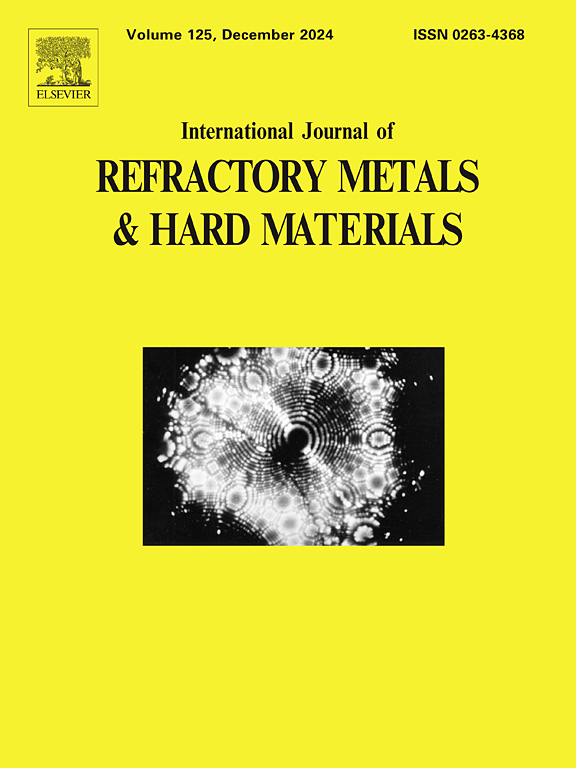Microstructural evolution and properties of CuW/CuCr interface infiltrated with CuCrNixTiZr multi-component powder interlayers
IF 4.2
2区 材料科学
Q2 MATERIALS SCIENCE, MULTIDISCIPLINARY
International Journal of Refractory Metals & Hard Materials
Pub Date : 2024-12-02
DOI:10.1016/j.ijrmhm.2024.106982
引用次数: 0
Abstract
CuW/CuCr integral materials were prepared by infiltration diffusion technology, and the multi-component powders with high entropy effect were used as the interlayer. The effects of CuCrNixTiZr high entropy alloy interlayers on the interfacial microstructures and properties of CuW/CuCr were studied. The results show that the interlayers with 0.5 mm thickness generate high entropy effect during infiltration for 1.5 h at 1350 °C, forms a simple solid solution phase at the Cu-W biphase interface and no intermetallic compounds were formed in the CuW/CuCr interface. EDS and XRD analysis show that metallurgical diffusion and melting occur at the CuW/CuCr interface in the interlayer infiltration diffusion process, which makes the Cu and W phase form metallurgical bonding at the Cu/W interface. With the increase of Ni content, the hardness of CuCr side of the integral material first increased and decreased, and the maximum hardness increases by 23.6 %. When the interlayer is CuCrNi2TiZr, the maximum interface bonding strength is 492 MPa, which is 50 % higher than that of the integral material without interlayer. The fracture morphology is mainly composed of the network structure generated by the ductile tearing of Cu phase and W cleavage fracture, and the cleavage fracture leave river pattern on the W particles.
求助全文
约1分钟内获得全文
求助全文
来源期刊
CiteScore
7.00
自引率
13.90%
发文量
236
审稿时长
35 days
期刊介绍:
The International Journal of Refractory Metals and Hard Materials (IJRMHM) publishes original research articles concerned with all aspects of refractory metals and hard materials. Refractory metals are defined as metals with melting points higher than 1800 °C. These are tungsten, molybdenum, chromium, tantalum, niobium, hafnium, and rhenium, as well as many compounds and alloys based thereupon. Hard materials that are included in the scope of this journal are defined as materials with hardness values higher than 1000 kg/mm2, primarily intended for applications as manufacturing tools or wear resistant components in mechanical systems. Thus they encompass carbides, nitrides and borides of metals, and related compounds. A special focus of this journal is put on the family of hardmetals, which is also known as cemented tungsten carbide, and cermets which are based on titanium carbide and carbonitrides with or without a metal binder. Ceramics and superhard materials including diamond and cubic boron nitride may also be accepted provided the subject material is presented as hard materials as defined above.

 求助内容:
求助内容: 应助结果提醒方式:
应助结果提醒方式:


